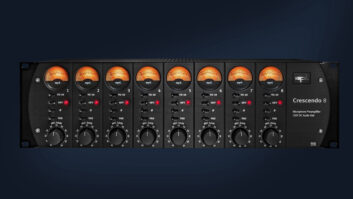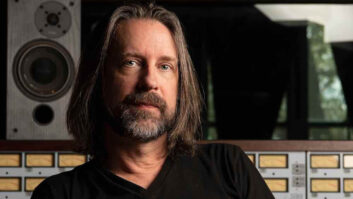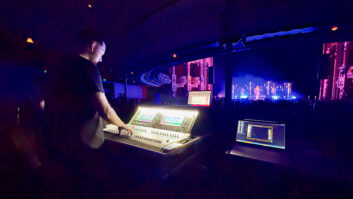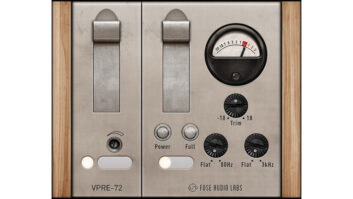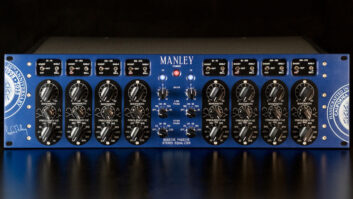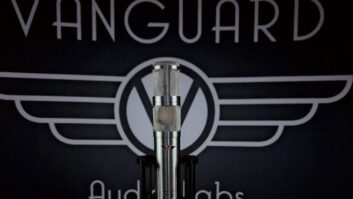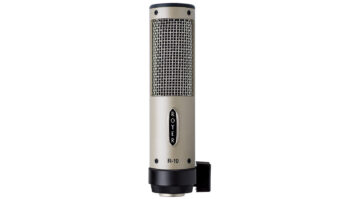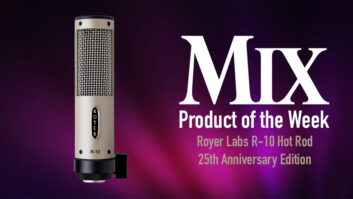Where does the spark of creativity come from when new tools and systems are designed? Is it from freedom, or from pressure? Can an engineer, working in an environment free of deadlines and milestones, come up with anything useful? On the other hand, can that same engineer, working within the tight structure of a fast-moving, results-oriented corporation, bring a truly innovative perspective to a design? What would happen if an engineer were to strike out in an entirely new direction and work in an artistic field for a period of time? Conversely, what would happen if an artist were dropped into a laboratory and given carte blanche to tap the brains of the tech-heads and to play with the machines?
For those of us who consider ourselves artists, and who work with technology all the time, these might seem strange questions. After all, combining art and technology is what we do. Balancing freedom and structure is what we live with every day. We’re constantly being called upon-or call upon ourselves-to do that left-brain/right-brain dance that requires being creative at the same time that we’re mastering sophisticated technological tools.
But once upon a time, the worlds of the artist and the scientist were quite different. People wore different hats, and it was only under the rarest of circumstances that they trod on common ground and, if they dared, exchanged headgear.
In the companies where audio and music software and hardware are designed today, artists trained in technology and engineers with artistic hankerings work side by side. The artist who blithely goes through an entire career ignorant of the technological tools of his or her trade strikes us as a sad anachronism, and the technician who doesn’t spend at least some down time fooling around with graphics, animation or music seems to us terribly one sided.
But not too many years ago, engineers who admitted to having musical aspirations, or musicians who were willing to pick up a soldering iron, were rarities. When those people started to come together, a revolution began. And nowhere was that revolutionary fervor felt more than at Bell Laboratories.
Bell Labs, the research arm of AT&T, the erstwhile American local and long-distance telephone monopoly, was founded in 1925 in Murray Hill, New Jersey, about 20 miles from New York City. From the beginning, it was the site of some of the most important technological developments of the century. The transistor was invented there, and so was the laser. So were the digital computer, the fax machine, cellular phones and UNIX. Bell Labs scientists discovered the background radiation left over from the Big Bang, and they were also the first to successfully synchronize film and audio. Manfred Schroeder, who developed the algorithms that are used in all of today’s digital reverbs, was a researcher at Bell Labs, and Michael Noll developed at the Labs a three-dimensional force-feedback device, which is now a crucial part of what we call “virtual reality.”
A rare look inside the Bell Labs of decades past was provided at a public meeting held a couple of months ago at Cooper Union, an art school in midtown Manhattan. Ten digital pioneers who worked at the facility in the ’60s and ’70s came together for a reunion. The meeting was presented by a small but ambitious outfit called Arts & Sciences Collaborations Inc. (ASCI), in conjunction with Bell Labs’ present-day parent company, Lucent Technologies, and several other sponsors. The participants talked about what they did at the Labs, demonstrating seminal projects and works from that era. Perhaps more importantly, they talked about how the philosophy and unique cast of characters that made up this protean think tank nourished their creativity. This atmosphere made it possible for them to conceive projects that, in a more conventional setting, an infinite number of engineers working on an infinite number of computer terminals would never have come up with.
It was during World War II that Bell Labs went from being the home of a dedicated bunch of communications engineers to a broader-based think tank. “The place exploded,” explained Jerry Spivack, a pioneer in interactive graphics and the first of the alums to speak at the meeting. “Scientists were pulled from universities all over the country to work on radar. To attract them, AT&T needed to provide a fluid environment. Then, after the war, it stayed that fluid. We felt like we were in a period of unending growth, and in the next decade, the race to the moon gave us a lot of excitement and vision.
“AT&T considered us a national treasure,” he continued. “People were studying everything that had anything to do with communications-frog mating calls, for example. We were told, ‘Don’t even think about money-this is research!'”
The facility was situated near a nature preserve, and scientists were encouraged to walk in the surrounding woods and think. But it was also very spread out, with different people working on entirely different problems right next to each other. “In order to go anywhere, you had to pass other people’s offices,” recalled Spivack, “and there was always something strange going on in there, so you’d poke your head in and see what it was.”
Of course, not every project had totally positive consequences: “We did one exhibit with polyurethane,” he laughed, “which when we were setting up, we realized it would kill the audience with its fumes. Sort of gave new meaning to the phrase ‘knocking ’em dead!'”
But there was more to Bell Labs than just a coming together of the best scientific brains. “The powers-that-be wanted to extend the capabilities of the technology,” said Spivack, “and they felt the best way to do that was to bring in artists. We needed artists to think about what the technology meant.” At the same time, those engineers who had artistic sides were encouraged to let them emerge. Elsewhere this never would have been allowed to interfere with their “real” work. Said composer Laurie Spiegel, “There were all these informal chamber-music reading sessions going on.”
Max Mathews, today hailed as the father of computer music, held the title “Director of Acoustic and Behavioral Research” at the lab until 1985. In his comments at the meeting, he noted that Cooper Union was a particularly apt place to hold the event because the first public concert of computer music took place there in 1960. “There was a phalanx of New York police to protect the equipment,” he recalled, “in case there was a riot.”
Mathews created his first computer music in 1957, “terrible bloops for 17 seconds,” he recalled. In response to the difficulty he had organizing the sounds, he wrote the first dedicated musical computer language, MUSIC I. In 1960, he used physical modeling (!) to create the rendition of “Bicycle Built for Two,” made famous in the movie 2001: A Space Odyssey, as the last thing the HAL 9000 computer utters before it undergoes a lobotomy. Not long after that, he designed GROOVE, the first interactive computer music system, which used a computer to generate voltages, which in turn controlled analog synthesizer modules.
“By day, the computers were used for speech research, and by night, music research,” Mathews explained. He could give passes to people who wanted to work overnight, and one of those was composer Emmanuel Ghent, who was also on the panel. “When Ghent’s marriage broke up, and he remarried, I gave him the computer as a wedding present,” said Mathews, “so he wouldn’t have to come in and work all night.”
Ghent talked about his work with the machines controlling both music and theatrical lighting dimmers, about developing a music-notation generator, and about how he used random number generators to create music, in the first experiments in computer-driven algorithmic composition. “Some random numbers sounded better than others,” he recalled. “If I were a better programmer, I would simply have programmed things that I wanted to do. But because I wasn’t very good, I had to simplify the programming. But then things came out that I never would have dreamed of by myself. So there’s something to be said for not being a master of the technology.”
Laurie Spiegel was another artist whose personal life was disrupted by Bell Labs. “I was going there all the time, and pretty soon a long-term relationship that I was in ended-he couldn’t believe I was spending all those nights with a computer!” she said. A composer and instrument designer, Spiegel later developed the deceptively simple algorithmic program for personal computers-Music Mouse. Bell Labs gave her her first exposure to computers. “I had always loved art and science and was working a lot with Buchla synths when I met Manny [Ghent] and Max at a concert at The Kitchen,” she said, referring to a well-known downtown New York spot for experimental music. The scientists invited her to come down to the labs and play at night. “I had no computer background at all, so I read a book on FORTRAN,” she remembered. “I kept my sleeping bag in the lab’s anechoic chamber-boy, was that a quiet place to sleep!”
Spiegel was intrigued by the real-time interactive aspects of the work. “You could hear interactively what you were doing for the first time, and get feedback,” she said. “Max coined a term for it in 1973: ‘intelligent instrument.’ It meant that the response you got was not in one-on-one correspondence with the physical gesture you made.” She also saw the Labs as an opportunity to experiment with “automating my own decision-making processes as an artist.”
The process of composing with computers, she emphasized, although it was interactive, was not fast. “The computers allowed storage, editing and overdubbing of your performances, but all of these tasks were done in different rooms. The digital lab had a computer the size of four refrigerators, which had 32K of memory. The analog lab, where the synthesizer was, was 300 feet down the hall. There were 14 control lines, each for pitch, amplitude, etc., and you constantly had to retune and calibrate the equipment. So we did a lot of running around-we were all in good shape. Meanwhile, in between the labs, you had to pass by this incredible window that was showing evolving visual images. Finally, I got up the guts to talk to the programmer, Ken Knowlton, who was doing them. We ended up collaborating on some projects.” She was also inspired to write control programs for video synthesizers.
And speaking of refrigerators, “We often worked in parkas,” Spiegel recalled with a laugh. “The computers had trouble if the room temperature was above 50 degrees. Someone would come every hour and take the temperature.”
Spiegel referred to the work going on at Bell Labs at that time as “a Rosetta Stone for connecting between different sensory modalities”-in other words, multimedia. And there was a communal aspect to the work that one sees infrequently today: “We were proud of each other’s accomplishments, not threatened by them.”
As Spivack said, “Algorithmic technology is dangerous to the idea of a sole artist working in solitude. Works that come out are not necessarily products of ego. It allows a collaboration, which is rare in our culture but common in many others.”
Although AT&T supported all of the strange goings-on, their attitude was somewhat ambivalent. Spiegel said, “What we were doing wasn’t really a ‘proper’ business for a monopoly, so we had to keep a lot of it hush-hush.” Ken Knowlton, among whose contributions was a graphic language to describe motion on a computer screen, and the visualization of molecules and other sub-microscopic objects, recalled that “I did a computer-generated nude with artist Leon Harmon. The administration said that we shouldn’t tell anyone where we did it-except when the New York Times published it, they told the Times to make sure the Lab got credit!”
After the breakup of AT&T in the early ’80s, Bell Labs had to redefine itself more narrowly, and much of the “pure” research, and the open-ended collaborations with artists, ended. Bell Labs still exists (and, in fact, is probably larger than ever, comprising other research facilities all over the world), as part of Lucent Technologies, which before the breakup was essentially the Western Electric division of AT&T. It is still making contributions to the world of audio, most notably by developing codecs for squeezing high-quality audio into ever-smaller bandwidths. It’s still a high-powered place: Recently, it announced that its scientists had achieved the first data transmission of 1 trillion bits per second.
And there are other research centers that still follow the Bell Labs model of putting artists and engineers in close quarters: IRCAM in Paris, MIT’s Media Lab, CNMAT in Berkeley, and CCRMA in Stanford, to name a few. But, as Max Mathews said, “They no longer lead the technology. It’s the companies that make the products that we use that are leading. I think that’s good.” But it follows a different model.
Lucent is very aware of its extraordinary heritage-the company was one of the sponsors of the meeting-and Doree Seligmann, currently a researcher at the facility in multimedia communications, said she is doing what she can to recapture the spirit of those years by organizing collaborations between the Labs’ researchers and artistic groups. “They told me when I came on board,” she said wryly, “that I had missed the Golden Years. But I think there’s a very important role for artists to play in development of technologies. They have to participate in the technical discussions. We have to always ask ourselves what technology is for, not just how to get the best bit or frame rate.”
The answers, the methods and the players are different from what they used to be, but the need for people who can ask those questions doesn’t change.
